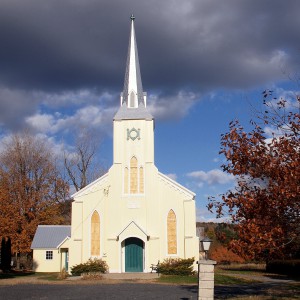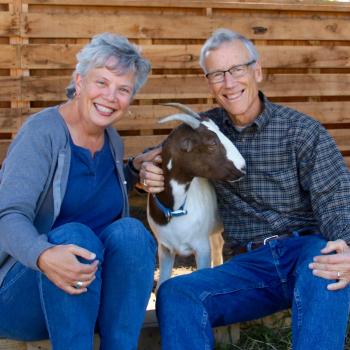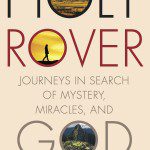The Holy Rover has been a-rovering for the past month, visiting a variety of sites that I’ll be telling you about over the next few weeks. I’ve learned about Amish culture in Indiana, found a place in New York where they worship philosophy, and become fascinated by Victorian hair art (this has a connection to holy sites, I promise).
While I’ve been wandering, all sorts of interesting things have happened in the world of religion. The Roman Catholics have a Jesuit pope who draws inspiration from Saint Francis (way to go, Pope Francis!). And Lent has now become Holy Week, with Easter just days away.

But there are growing numbers of Americans who view the whole shebang with disinterest, as Michael Gerson writes in an interesting piece in the Washington Post: An America that is losing faith with religion. He writes how American culture is increasingly shaped by people who would rather sleep in or play golf on a Sunday morning. As allegiance to mainline Protestantism and Roman Catholicism has waned, the group that claims no religious affiliation has grown significantly. In the 1950s, they were about 2 percent of the population. Now, this group (dubbed the “nones” by demographers) is close to 20 percent. Writes Gerson:
Not all the nones, it is worth pointing out, are secular. Only about 30 percent of this group — 6 percent of the public — are atheists or agnostics. The rest of the nones describe themselves as indifferent to religion or as “nothing in particular.” Sixty-four percent of the nones, however, say they believe in God or a universal spirit with “absolute certainty.” Even 9 percent of atheists and agnostics — defying both dogma and the dictionary— report themselves absolutely convinced of God’s existence. About equal proportions of the religiously unaffiliated (19 percent) and the affiliated (18 percent) report having “seen or been in the presence of a ghost.”
But while the nones may be spiritual in some ways, they don’t affiliate with any form of organized religion. They benefit from the decreased social stigma towards those with no religious affiliation, which isn’t a bad thing in many ways. Churches used to be filled with Protestant and Catholic agnostics, writes Gerson, people who didn’t believe what they were saying aloud but found it expedient to belong for other reasons.
A friend and fellow Episcopalian read this article and recalled the days when our congregation seemed to have more people who were there because it was expected that respectable folks needed to belong to a church (and the Episcopal church was certainly respectable). “Now no one needs to belong to a church to be in positions of responsibility and our church is filled with people who are full of faith,” he says. “I find it to be much healthier and vibrant now compared to the old days. But even when Jesus walked the earth, I wonder what percentage of folks heard him preach and then just walked away to play the equivalent of golf.”
Let me conclude with another of the intriguing points Gerson makes in his piece, which is that while the nones are growing, once people fall away from organized religion they don’t always stay there (I love his last line, in particular):
According to Pew, 74 percent of the nones grew up in a religious tradition of some sort. Yet while conversion has increased the ranks of the nones, retention is not particularly good. Protestantism, for example, loses about 20 percent of those raised Protestants. Of those raised unaffiliated, 40 percent fall away from the non-faith and rebel toward religion, making for a new generation of awkward Thanksgivings.











